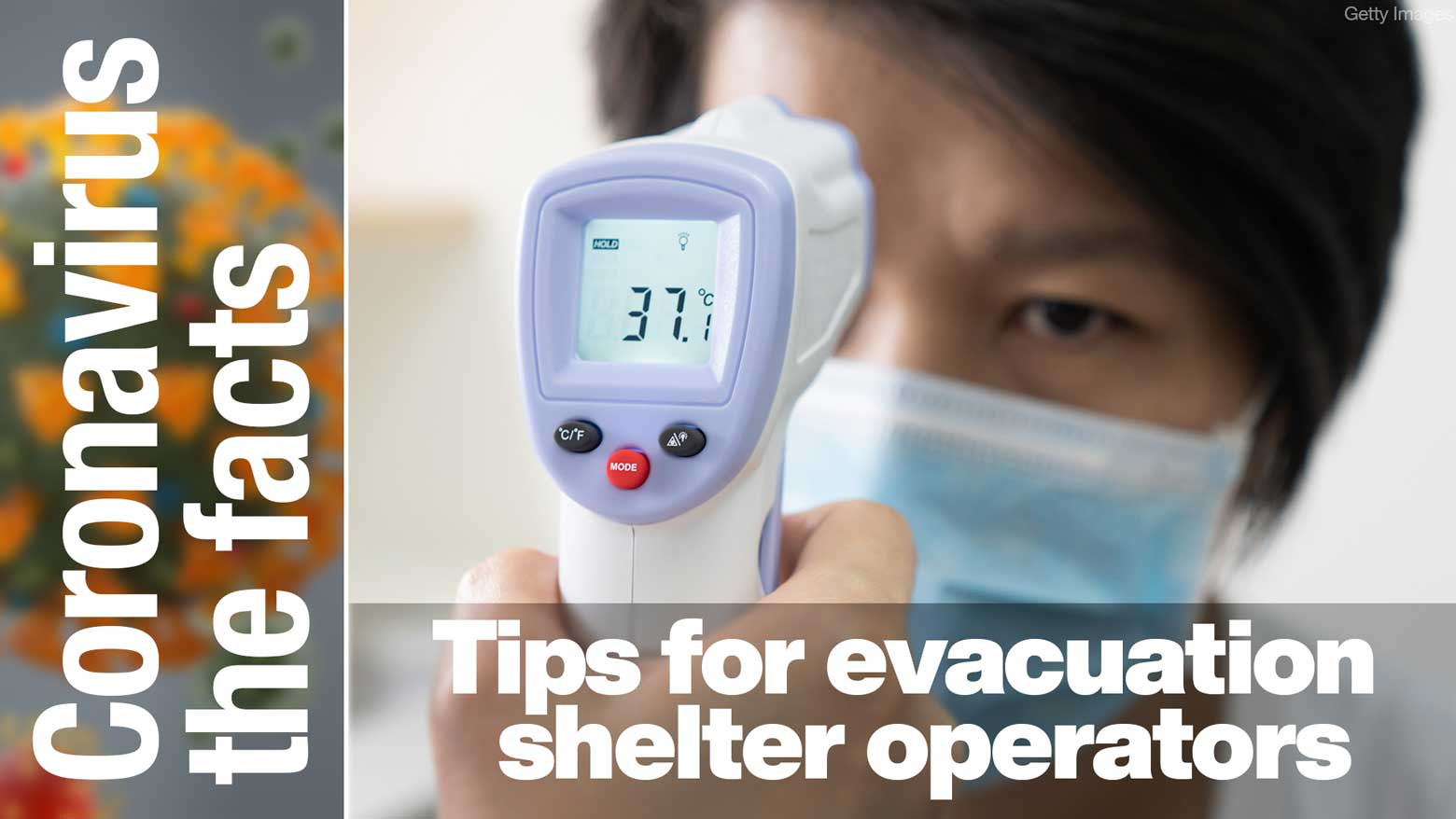This is part 33 of our coronavirus FAQ. Click here to read other installments: #Coronavirus the facts. Find the latest information and answers from experts on everything COVID-19.
Check the conditions of the evacuees
Kanbara Sakiko, a professor at the University of Kochi and a specialist in nursing care during disasters, says shelter operators should check the temperature of evacuees before allowing them to enter. Operators should then check for any other symptoms such as fever, cough or severe listlessness.
Prepare separate rooms for people who may be infected
Anybody who may be infected, must be separated from others. Operators need to secure dedicated spaces – for example a classroom, if the shelter is an elementary school gymnasium.
Set up cardboard partitions
Kanbara stresses the importance of reducing the risk of infection from droplets. If it is difficult to secure enough space between evacuees, cardboard partitions could be helpful. It is also important to ask people not to touch the partitions.
Regularly disinfect and wash hands
Kanbara says evacuees must be able to frequently disinfect and wash their hands. Shelters contain many common that are prone to passing on the virus, such as restroom door handles, light switches, handrails and so on. Washing and disinfecting hands before and after touching these things is important. Evacuees must adopt the mindset that they could already be carrying the virus.
Alcohol-based disinfectants should be placed at entrances to restrooms and shelters. Disinfecting hands before and after touching relief supplies and stockpile many people tend to share to use is also important.
The information was accurate as of July 17, 2020.
For your reference:
